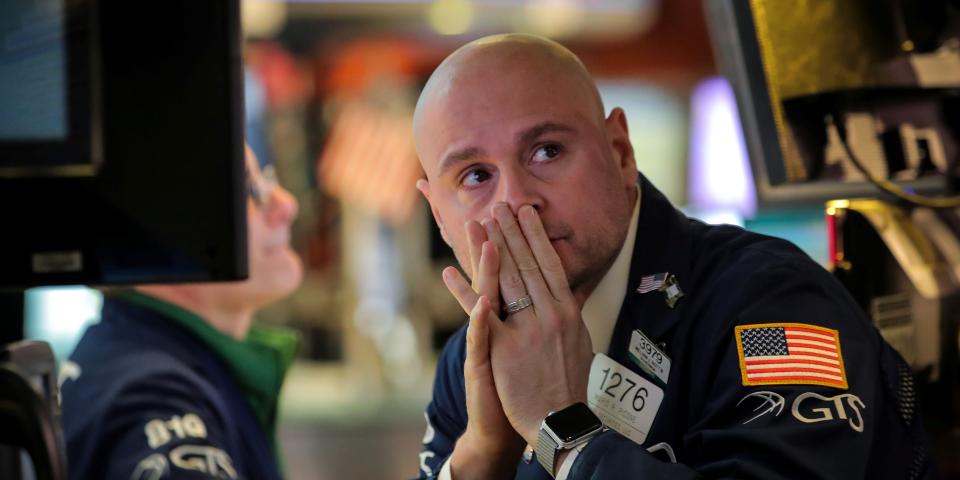The stock market could crash 23% this year if these 3 risks become reality, UBS says

The stock market has a downside scenario that could spark a S&P 500 crash of more than 20%, according to UBS.
The bank highlighted three big risks investors should be aware of even as record highs are hit.
A potential recession, rising inflation, and geopolitical turmoil are all looming over investors.
Even as the stock market surges to record highs, there are looming risks that could spark a steep sell-off later this year, according to a recent note from UBS.
The bank highlighted a downside scenario for the stock market that would send the S&P 500 crashing 23% to 3,700, which is just above the depths reached during the October 2022 bear market low.
According to David Lefkowitz, UBS' chief investment officer for US equities, there are three risks that would drive such a bearish scenario later this year.
The first is the US slipping into a "full-blown recession" in the next six to 12 months, according to the note.
While many economists have come around to the idea that a recession is off the table this year, Lefkowitz said that the lagged effects of the Federal Reserve's interest rate hikes, combined with dwindling household cash buffers, could spark an economic downturn.
The Fed raised rates 11 times from 2022 through 2023, and it can take upwards of 12 months for the impact of those increases to make their way through the economy. That timeline would suggest a weakening in the second half of 2024.
Another risk for the stock market is if inflation stays hot, which would be a rude awakening for the economy and consumers, as expectations have been building that a steady decline in inflation would enable interest rate cuts from the Fed.
But if inflation stays elevated, "central banks are forced to raise interest rates even more of keep them at lofty levels for longer than expected," Lefkowitz said. That would stoke the risk of stagflation and could lead to a wage-price spiral.
The final risk is an increase in geopolitical turmoil, which has already been elevated due to the ongoing conflicts between Russia and Ukraine, Israel and Hamas, the Houthi rebels and the US, and growing tensions between China and Taiwan.
If geopolitical flash points spiral out of control, it could disrupt energy markets and drag even more countries into hostilities. The potential for higher energy prices would stoke inflation fears, which could impact the Fed's plans for interest rate cuts.
Taken together, it's these three risks that could end the current bull run in stocks and make way for a new bear market that tests the lows seen in 2022, according to Lefkowitz.
Read the original article on Business Insider
